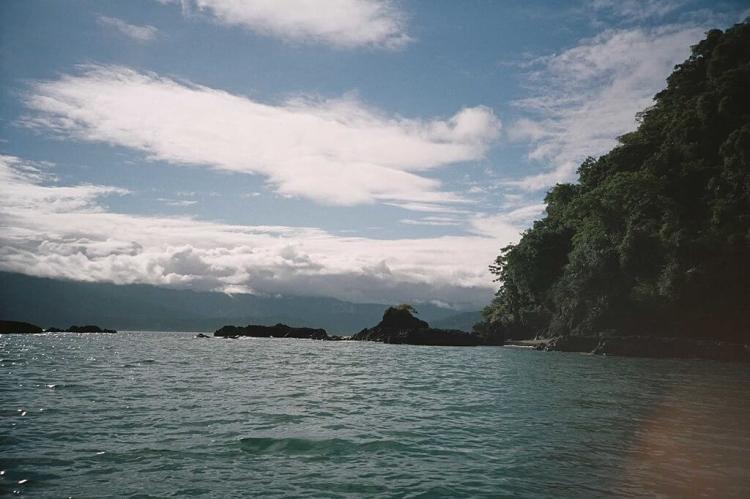Tribugá-Cupica-Baudó Biosphere Reserve: A Jewel of Biodiversity and Sustainability in Colombia
The Tribugá-Cupica-Baudó Biosphere Reserve in Colombia protects the Gulf of Tribugá region's biodiversity, cultural heritage, and habitats like mangroves, rainforests, and coral reefs. It promotes sustainable development, scientific research, and community engagement while tackling challenges.
Tribugá-Cupica-Baudó Biosphere Reserve
A Jewel of Biodiversity and Sustainability in Colombia
Colombia has embarked on a remarkable journey towards conservation in recent years, epitomized by the designation of the Tribugá-Cupica-Baudó Biosphere Reserve. Encompassing the Gulf of Tribugá and its surrounding areas, this biosphere reserve symbolizes Colombia's commitment to protecting its rich biodiversity and cultural heritage while fostering sustainable development and community engagement.
Expansion of Protected Areas
Establishing the Tribugá-Cupica-Baudó Biosphere Reserve signifies a significant milestone in Colombia's environmental conservation efforts. By expanding protected areas within the Gulf of Tribugá, the biosphere reserve extends crucial safeguards to habitats such as mangroves, rainforests, and coral reefs, ensuring the preservation of the region's unique flora and fauna.
Conservation and Research Opportunities
The biosphere reserve serves as a hub for scientific research and conservation initiatives, offering researchers a platform to study the ecosystems of the Gulf of Tribugá and monitor changes over time. Through biodiversity assessments, habitat mapping, and ecological monitoring, scientists gain valuable insights into the region's ecological dynamics, informing conservation strategies for long-term preservation.
Community Engagement and Sustainable Development
Central to the ethos of the Tribugá-Cupica-Baudó Biosphere Reserve is the emphasis on community involvement and sustainable development. Indigenous communities, local stakeholders, and conservation organizations collaborate to develop and implement sustainable management practices that balance conservation objectives and the needs of the local populace.
Ecotourism and Cultural Experiences
The biosphere reserve offers a gateway to ecotourism development, inviting visitors to explore the natural and cultural wonders of the Gulf of Tribugá responsibly and sustainably. Through guided tours, community homestays, and cultural exchanges, visitors immerse themselves in the region's rich biodiversity and indigenous traditions while contributing to local economies and conservation efforts.
Challenges and Opportunities Ahead
Despite the biosphere reserve's designation, challenges persist, including illegal fishing, deforestation, and climate change. Addressing these threats requires continued collaboration among government agencies, conservation organizations, and local communities to safeguard the long-term sustainability of the Gulf of Tribugá and its environs.
Exploring the Tribugá-Cupica-Baudó Biosphere Reserve
Situated in Colombia's Chocó region, the Tribugá-Cupica-Baudó Biosphere Reserve, designated by UNESCO in 2023, encompasses a vast area of 2.5 million hectares (6 million+ acres), including the Gulf of Tribugá, the Baudó River, and the Cupica River. This biosphere reserve features diverse landscapes, from cliffs to estuaries, and many ecosystems, such as reefs, mangroves, and tropical forests, teeming with biodiversity.
Flora and Fauna
The reserve is home to various plant and animal species, including iconic creatures like the jaguar, harpy eagle, and the critically endangered vaquita porpoise. Moreover, the reserve's socio-economic landscape is shaped by its population of over 18,000, predominantly comprising Indigenous Embera and Afro-Colombian communities whose livelihoods depend on subsistence agriculture, artisanal fishing, and traditional crafts.
Conservation Efforts and Threats
While the biosphere reserve holds promise for conservation, it faces threats from deforestation, mining, and overfishing. Illegal activities like deforestation for agriculture and logging pose significant risks to the region's ecological integrity, while mining activities contribute to pollution and habitat destruction. Overfishing further strains the reserve's marine ecosystems, jeopardizing the sustainability of fish populations.
Government Initiatives and Future Prospects
To mitigate these challenges, the Colombian government has established the Tribugá-Cupica-Baudó National Park within the reserve, alongside efforts to curb deforestation and mining activities. These initiatives underscore the importance of protecting the reserve's unique ecosystems and cultural heritage, ensuring its sustainability for future generations.
In conclusion, the Tribugá-Cupica-Baudó Biosphere Reserve represents a beacon of hope for biodiversity conservation and sustainable development in Colombia. By fostering stakeholder collaboration and prioritizing community engagement, the reserve is a model for responsible stewardship of natural resources, offering a promising future for the Gulf of Tribugá and its inhabitants.
